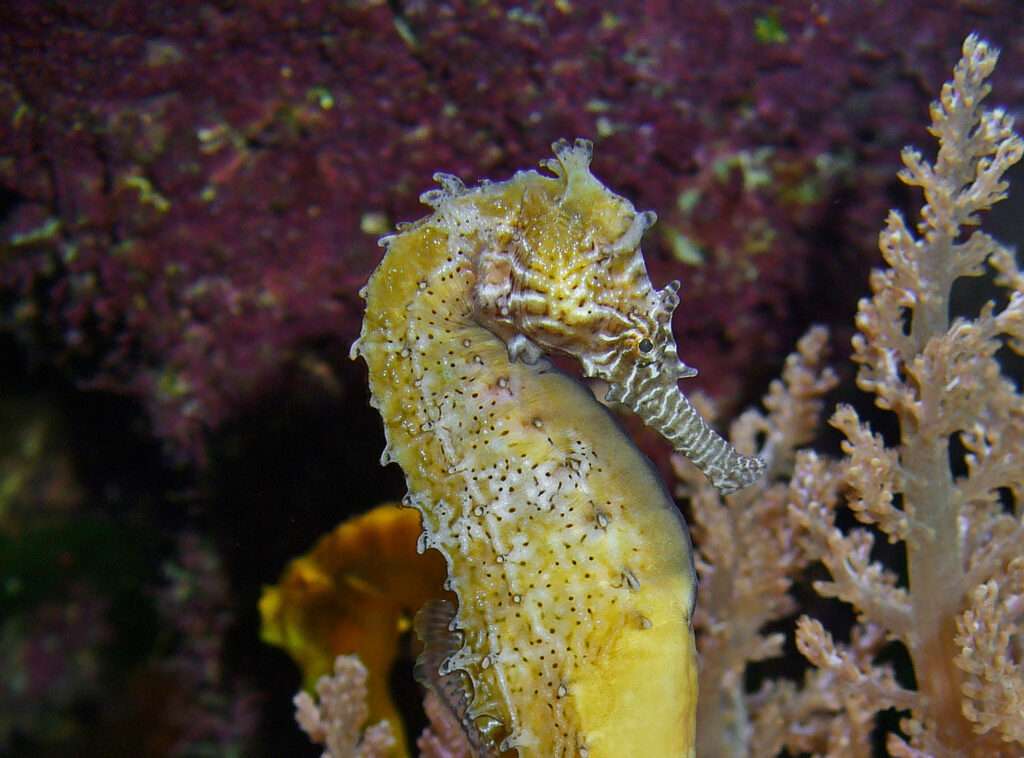
Because they can’t swim well, these specialized fish hide amid coral, seagrass, or mangroves where they ambush much smaller prey by snatching them up in their toothless snouts. They have intricate courting and bonding rituals, choose a mate for a season or a lifetime, and the male carries the embryos to term in his brood pouch. The lined seahorses have a length of more than 7 inches and a lifespan of one to four years. They have low risk of predators because of their great camouflage and bony plate body shape, yet people still hunt them for traditional medicine and the aquarium trade.
Habitat
The Hippocampus erectus can be found in Canada, Cape Cod, and sporadically Nova Scotia. The lined seahorse is found at depths of 2-230 feet (.5-70 m), and it is frequently seen clinging to corals, sponges, coral reefs, mangroves, seagrass, and floating sargassum. Sargassum residents frequently develop fleshy tabs and protuberances that help them blend in. There are also instances of this seahorse near built-up areas. While newborn and young lined seahorses prefer to swim close to the water’s surface, adults may be found in plants or swimming freely in the middle of the ocean. This species migrates into deeper waters in the winter.

Physical Appearance
One of the fishes with the most peculiar appearances is the seahorse, which includes a number of species of the genus Hippocampus. It resembles a knight in a chess set due to its upright posture, horse-like head situated at a right angle to the body, and jointed armor. With the help of its prehensile tail, the seahorse may grasp coral and seaweed. The body is now covered with a semi-rigid skeleton instead of scales, which have been replaced by rings made up of around 50 rectangular bony plates.
For binocular vision, the eyes can freely rotate or they can converge. The kangaroo-like pouch that the male seahorse has on its ventral side, which is used for reproduction, is what sets them apart from female seahorses. A huge species of seahorse, Hippocampus erectus, can reach lengths of up to five inches. The pigmentation of H. erectus has a pattern of dark lines on a lighter backdrop, making it simple to distinguish it from other seahorse species. Additionally, H. erectus has 18 to 21 dorsal-fin rays.
Food Habits
The seahorse needs living food, just like all other members of the Syngnathidae family. They are unable to run after their prey at a fast enough pace. The seahorse instead suckles in tiny crustaceans using its long snout. Seahorses can almost precisely measure objects within the 1 inch range.
Economic Importance for Humans
Seahorses are a targeted fish in other areas where they are regularly traded for ornamental display, aquarium fish, and traditional Chinese medicine; however, they are not targeted in fisheries in the western Atlantic Ocean. It is additionally susceptible to habitat degradation because of coastal development and marine pollution.
Table





